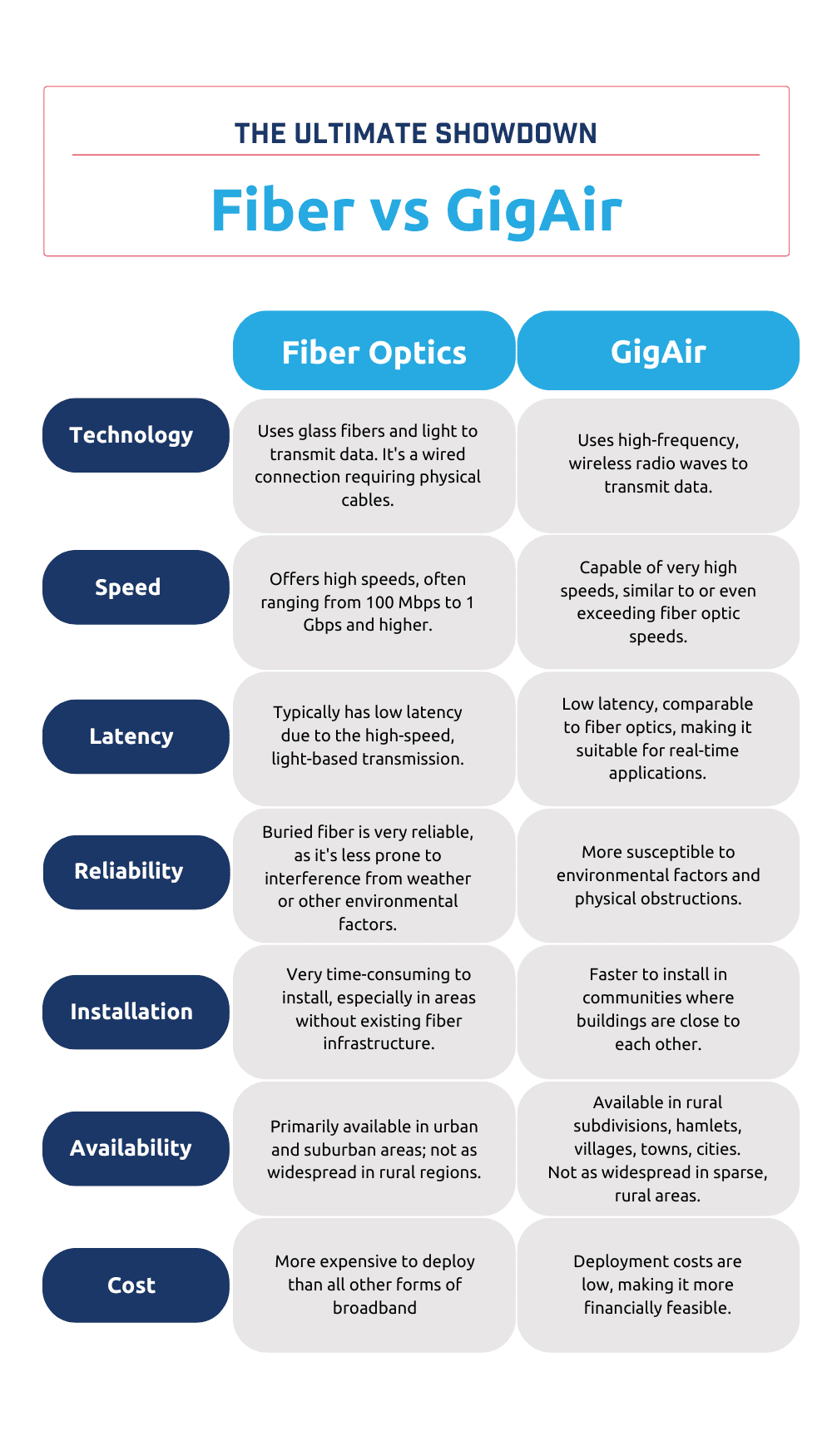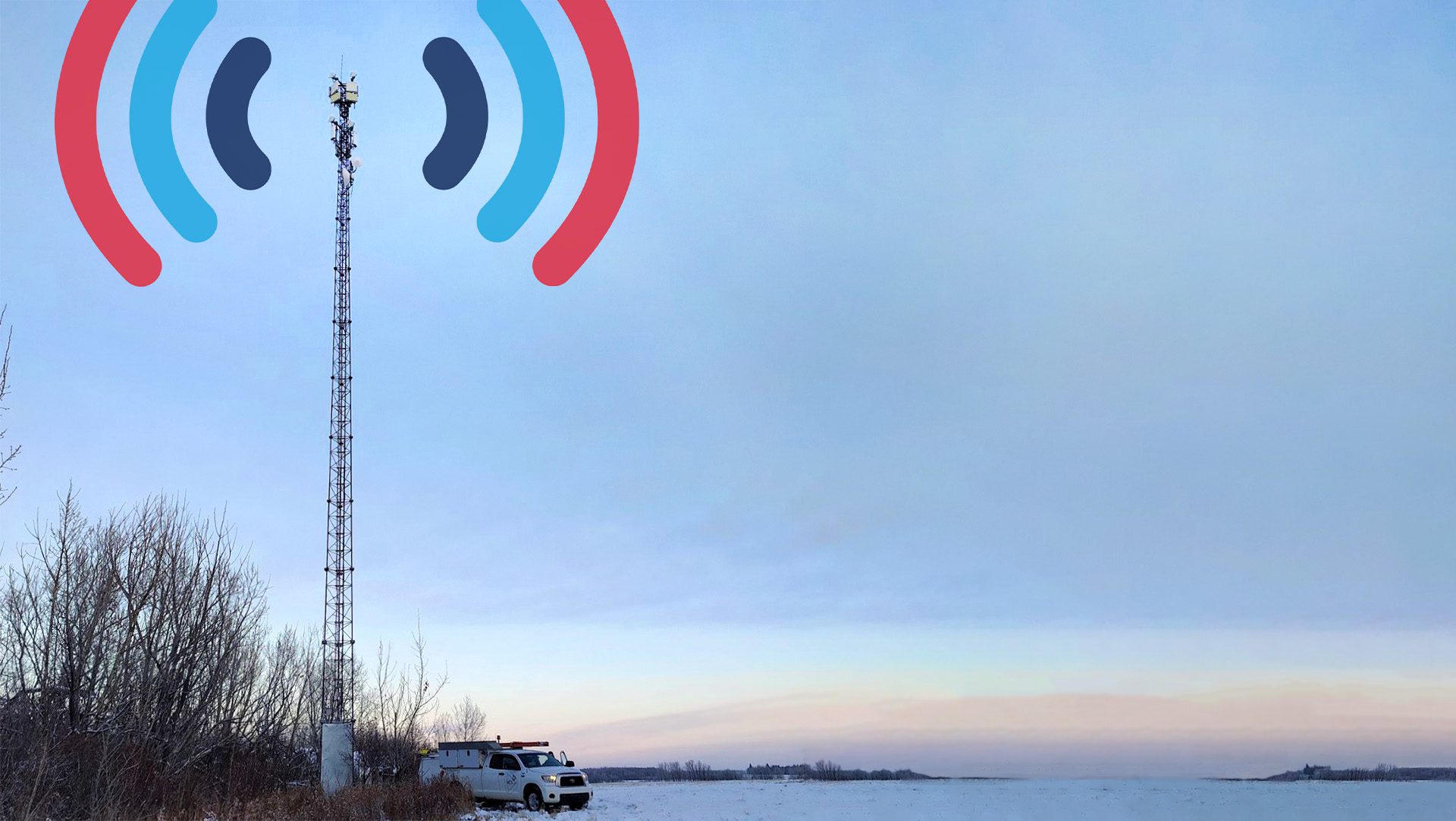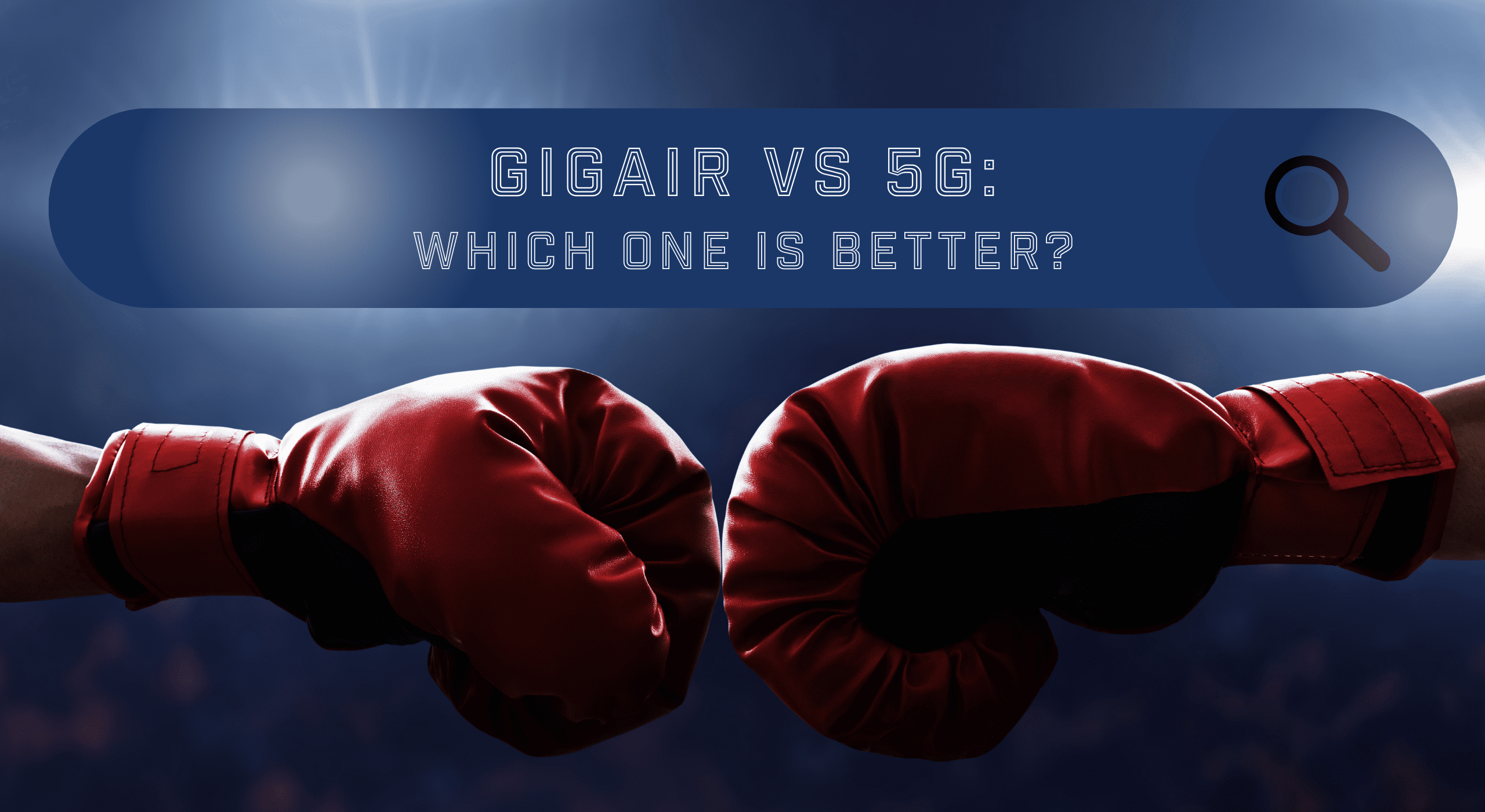
In one corner, we have Fiber Optics, long been known as the gold standard of internet connectivity, using strands of glass fibers to transmit data at very high speeds.
In the other corner, we have a new contender, GigAir, using its wireless, Millimeter Wave technology to also transmit data at very high speeds.
We go head-to-head in this ultimate showdown of high speed internet titans to see which internet techology will reign supreme.

Speed and Latency are Equal
When it comes down to speed and latency, Fiber and GigAir are equals, especially in the way that MCSnet has deployed Millimeter Wave technology. MCSnet uses the high speed capacity of its Fiber to the Tower to transmit gigabit speeds through a community using high frequency radio waves.
Reliability
You cannot ignore the reliability of buried Fiber Optic internet applications. You do not need to worry about inclement weather or solar flares. However, as we have seen in recent news reports, Fiber Optic cables can be damaged, either accidentally during construction or on purpose in acts of vandalism. Repairing damaged Fiber Optic cables takes time and can cause widespread outages.
MCSnet not only ensures that its privately-owned network has multiple redundancies to ensure reliability, it has also put numerous GigAir redundancies in place to ensure outages are kept to a minimum. By creating multiple links to each GigAir customer and developing its own failover back-up to its traditional wireless radios, you can be assured that GigAir is as close to the reliability of Fiber as possible.
Installation and Cost
This is where there is no competition. GigAir is the true winner. In 2023, MCSnet deployed GigAir in 50 communities and installed 2,500 customers with gigabit speeds. A total of 27,000+ households are now eligible to receive super fast internet via GigAir.
A Fiber deployment of this magnitude would be near impossible. It takes time and a lot of cost to deploy Fiber — a typical Fiber-to-the-Home (FTTH) deployment costs anywhere from $6,000 – $10,000 per home — and many weeks to trench Fiber in each community, due to the nature of the construction and the existing underground infrastructure.
Taking out the time factor, to install 2,500 Fiber customers would, on the low end, cost a total of $15 million. To cover the current 27,000+ GigAir-eligible households, it would cost $162 million to launch FTTH. MCSnet launched GigAir at a fraction of this cost. Considering the time, it would take three construction seasons to install 2,500 Fiber clients.
Availability
Due to the fact that it is a lot faster and cost-effective to launch GigAir in a community, GigAir is again the winner for availability. The ability to launch GigAir in 50 communities across our service area in one year is no small feat — and we are looking towards the remainder of Alberta in the years to come.
As a rural internet provider, we remain committed to finding new technologies and improving our infrastructure to service our more rural and remote customers. We are currently testing numerous wireless technologies that will far surpass the CRTC’s minimum 50/10 Mbps standards.
And with our robust network of over 500 towers and our own private Transit Fiber network acting as a backbone to our towers, we know we will continue to break down barriers for rural internet.
In Conclusion
GigAir is just as fast as Fiber and they both have low latency. When it comes to installation and cost, GigAir is a clear winner. We know Fiber is known for its reliability, but MCSnet has taken great strides to ensure GigAir is just as reliable. When considering the nature of how Fiber and GigAir is deployed, it makes sense to use these two technologies in more densely-populated areas.
In the end, when it comes to deploying gigabit speeds to multiple communities in a timely and cost-effective fashion, GigAir is the ultimate victor. For too long Fiber has been touted as the only option for communities, but we have proven that GigAir is another truly viable option to offer gigabit speeds on a large scale.



